"The expectations of first lady are always at least a generation behind."
— Katherine Jellison, history professor at Ohio University
Eleanor Roosevelt never wanted to be first lady. For her husband, of course, she was "glad" that he was elected president of the United States in 1932. But for herself, not so much.
She knew that when she moved into the White House in a few months she would have to give up her teaching job. "I've liked teaching more than anything else I've ever done," she told an Associated Press reporter. "But it's got to go," she added, a decision she hated making.
Almost nine decades later, Jill Biden, also a teacher preparing for her life in the White House, has indicated she will make a very different choice.
Dr. Biden, who started her career in the 1980s, has worked as an English teacher at an adolescent psychiatric hospital, high schools and community colleges, while earning two master's degrees and a doctorate in education along the way.
She didn't quit teaching when her husband served as vice president, returning to the classroom just days after the inauguration. She juggled her two worlds by grading papers on Air Force Two or bringing a change of clothes to work so that she could "leave from the campus straight to a State Dinner." When students asked if she was married to the vice president, she would deflect palace intrigue by simply saying she was one of his relatives.
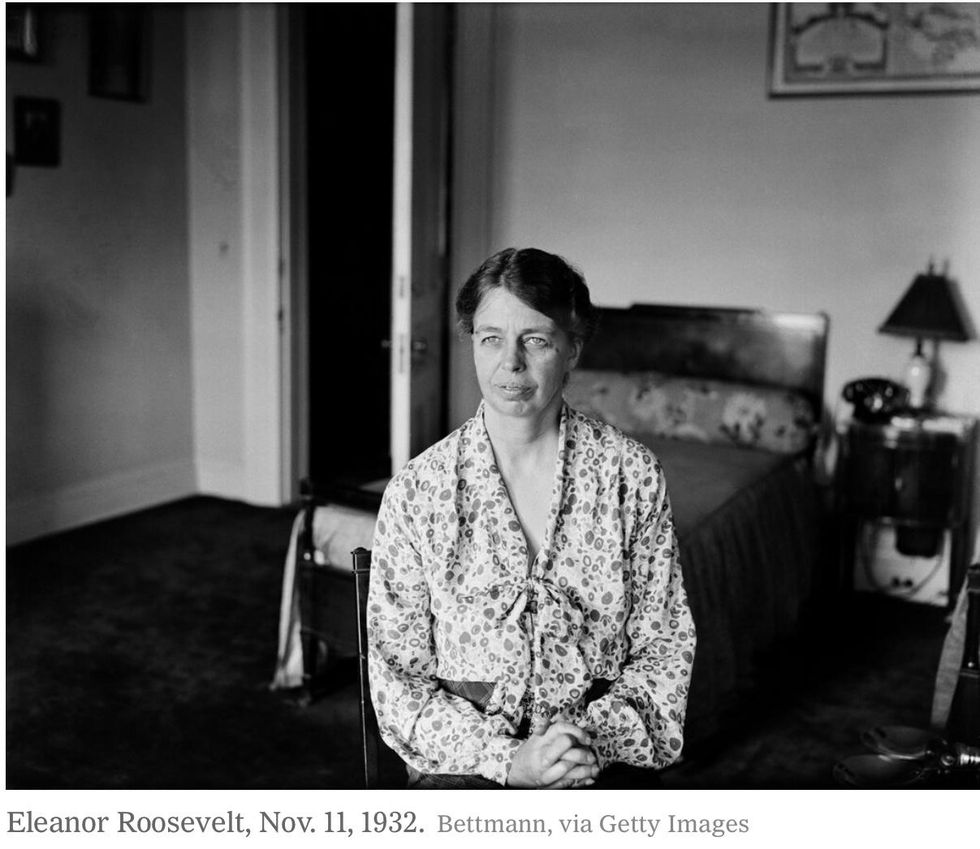
Come January, when her husband's job title changes, hers will stay the same: Unlike every other first lady in American history, she has said she will keep her full-time job.
"I'm going to continue to teach," she said in an interview on "CBS Sunday Morning" in August. "It's important — I want people to value teachers."
That Dr. Biden's career ambitions, beyond the formal duties of a first lady, are of note is a telling sign of how unrepresentative first families have become, a far cry from the reality of many American families.
Since at least the late 1950s, presidential families — at least while occupying the White House — have reflected the old-school nuclear family of the "Leave It to Beaver" sitcom variety: a heterosexual couple, married, with children; husband in the public sphere, bringing home an income; a perfectly coifed mother in the domestic sphere, managing everything from meal planning to Christmas decorations.
Through the '50s and '60s, this model mirrored a majority of American households and reflected the country's broad attitudes at the time toward marriage, class and traditional gender roles.
But in the 1970s and '80s, a combination of the women's movement and declining wages made single-income households both impractical and undesirable.
"You had the beginnings of the unraveling of the economic prosperity of the 1950s, and it became harder and harder to get that American dream," said Stephanie Coontz, social historian at Evergreen State College in Olympia, Wash. "Many women were joining the work force, some of them because they felt so trapped at home by this monolithic idea of what a good family is, and some because they had to."
Except the first ladies. Even those who had carved out their own careers and identities before their husbands were elected president had to contort themselves to fit into a vintage first lady mold.
The 'folksy' first lady
"The title 'first lady' is a social title. It's simply about being the first lady of society," said Lisa Kathleen Graddy, curator of the National Museum of American History's first ladies collections. The role came about in the 19th century when the White House needed a hostess to entertain guests, Ms. Graddy explained, and back then, that wasn't necessarily the job of the president's wife. The hostess role was more frequently occupied by other people, like daughters, daughters-in-law, or, in the case of President James Buchanan, the only American president never to marry, his young niece.
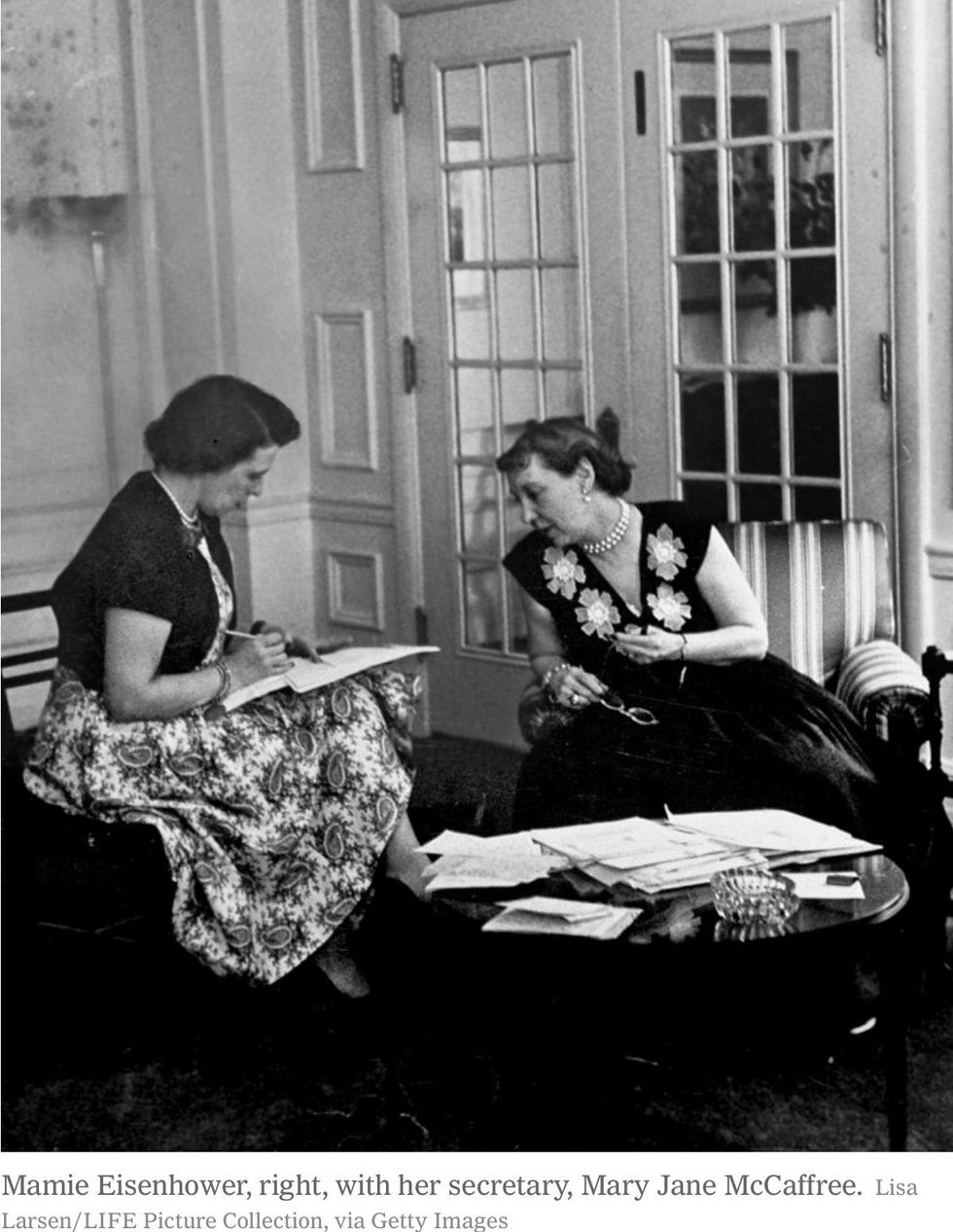
The tide really turned in the 1950s with Mamie Eisenhower, who was praised in the press as a "happy home manager," known for entertaining large groups, writes Betty Boyd Caroli in her book "First Ladies: The Ever-Changing Role, From Martha Washington to Melania Trump."
She was seen as "familiar and folksy as the woman next door" and also came to be known for staying in bed for most of the day in "her pink bed jacket" and "a pink ribbon holding back her hair" (some have noted that she was bedridden in part because of poor health). Her name became forever associated with a hairstyle (the Mamie bangs) and a recipe for chocolate fudge.
At the time, when a wife's role was broadly seen as "secondary and supportive," Mrs. Eisenhower was the perfect representation of the prevalent "model of femininity," Ms. Caroli writes.
Only 18 percent of American children were born into families in which both parents were employed back then, said Ms. Coontz, who is also author of "American Families: A Multicultural Reader," and more than half of Americans disapproved of married women who worked if their husbands were capable of supporting them, according to a Gallup survey.
But as the feminist movement started to take off in the 1960s, the Mamie model began to feel outdated, and successive first ladies slowly pushed the boundaries of their roles.
Jacqueline Kennedy, known as a fashionable tastemaker, decided to redecorate (though she hated that term) the White House so it could become "a showcase of American art and history." She curated antiques and art collections and gave tours of the White House on national television. She was the original first lady to have a formal project, though it still fell squarely in the domestic sphere.
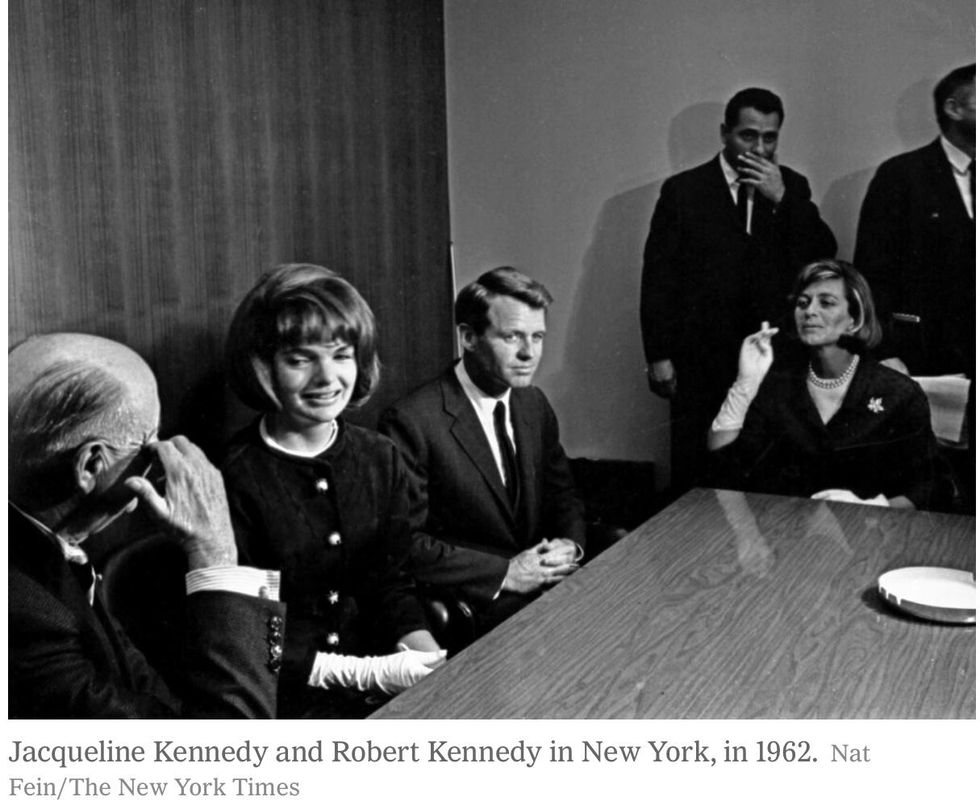
"It is now quite all right for a woman to be a bit brainy or cultured," declared a 1962 New York Times articleabout the Kennedys, when referring to Mrs. Kennedy in particular. "As long as she tempers her intelligence with a 't'rific' girlish rhetoric."
Claudia Alta "Lady Bird" Johnson took the role a step further with her campaign to beautify American cities and clean up the environment, which made her the first to work on a sustained public and political cause, closely coordinating her efforts with the West Wing and Congress. Her work set up the expectation for her successors to follow suit, Ms. Graddy said.
A split emerges
From the '70s onward, as women gained more freedoms, graduated from college at higher rates, delayed marriage and childbirth, Americans grew comfortable with the idea of women working outside the home.
But that comfort never seemed to extend to the White House; the anachronistic expectation of a first lady who picked out the right china and supported her husband, all while wearing pearls and heels, continued to be foisted onto increasingly modern women.
"The expectations of first lady are always at least a generation behind," said Katherine Jellison, a history professor at Ohio University who has researched and focused on first ladies. "I mean, the first first lady to wear pants in public was Pat Nixon in the 1970s. That's just one example of how the expectations of the women fulfilling this role have lagged."
Mrs. Roosevelt, after giving up teaching, continued writing for a magazine but donated all of her income to organizations like the Red Cross to quell criticism.
Hillary Rodham Clinton, who at 26 served as a lawyer for the Watergate committee and eventually went on to become a corporate litigator earning a six-figure income, nevertheless felt compelled to emphasize her domesticity and soften her image to help her husband's presidential campaign, Ms. Caroli writes. She participated in a pre-election cookie bake-off against Barbara Bush and, for her first in-depth interview as first lady, spoke with a New York Times food criticabout the White House menu (it included more broccoli and less French food than prior administrations).
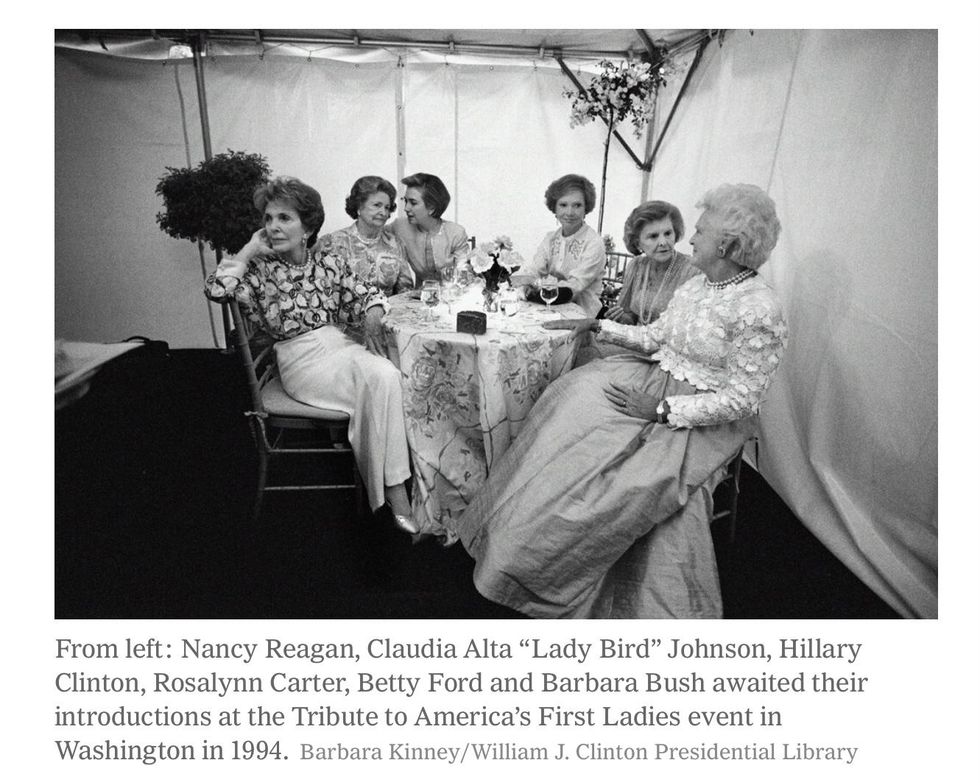
Mrs. Clinton initially tried to take the first lady's role into an unprecedented space by working directly with her husband on a crucial policy initiative as the head of a task force on health care reform, but the fallout — mainly in the media and among aides — forced her to revert to a safe and "traditional first lady mode" for the rest of her time in the White House, Ms. Caroli writes. Mrs. Clinton wrote books about raising children and family recipes, stood by her husband through his scandalous second term and advocated women's rights around the world.
Her immediate successors may or may not have viewed her experience as a cautionary tale, but Laura Bush and Michelle Obama chose to steer clear of controversial, partisan, inside-the-Beltway projects during their time in the White House.
At a time of heightened divisions in Washington and a war abroad, Mrs. Bush advocated literacy and education ("There's nothing political about American literature," she told The New York Times).
Mrs. Obama, a Harvard-educated lawyer who worked as a hospital executive before moving to Washington, got a taste early on during her husband's campaign of the heightened, racially charged scrutiny that she, as the country's first Black first lady, would experience. She was called "angry," "abrasive" and "emasculating." Her sizable, six-figure salary as a top executive at the University of Chicago Hospitals was questioned and seen as suspect.
"She got so much backlash from some quarters when she did unconventional things, and some of that criticism was in such racialized terms," Ms. Jellison said. "So she had to play up some of those traditional factors in order to gain acceptance. She had to play it safer."

When she moved to the fishbowl that is the White House, she carefully carved out a space for herself that was politically neutral, focusing on military families and childhood obesity.
"Who can question that healthful living is a good thing?" Politico wrote at the time.
By the time she left the White House, she was one of the most popular political figures in recent memory, with a clean reputation of rising above the mudslinging.
The divergence between the gendered expectation around what a first lady ought to be and the actual reality of what women's lives are, dovetails with the rise of the conservative religious right that fiercely opposed the feminist cultural changes of the 1970s and '80s. Large pockets of American voters still aspired to so-called traditional family values — often equating divorce, single motherhood and lower marriage rates with increased crime — and seemed to look for that in their leaders.
Americans have voted for a divorced president only twice — Ronald Reagan in 1980 and Donald Trump in 2016 — and it isn't a coincidence that both have hewed closely to the socially conservative beliefs of right-wing, Christian voters and upheld patriarchal notions of family with traditional gender roles ("I'll supply the funds and she'll take care of the kids," Mr. Trump said of his wife, in a 2005 interview).
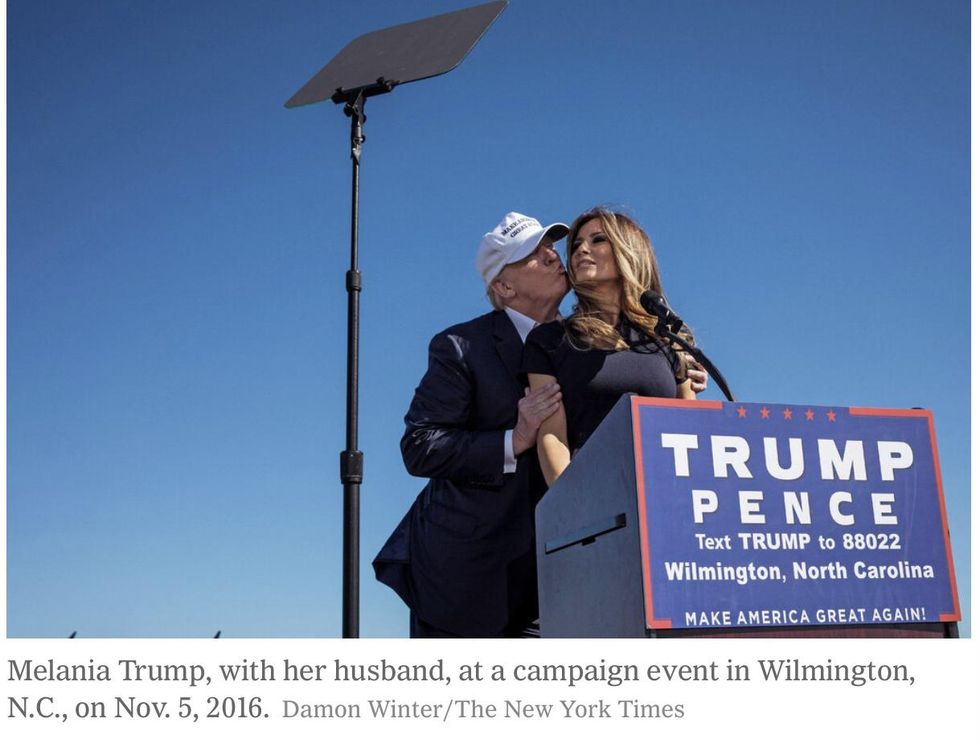
Perhaps by extension, Melania Trump, who engaged in such few minimal public appearances during her husband's term that there was early speculation that Mr. Trump's daughter Ivanka might occupy the first lady role, is seen by experts to have snapped back to a more traditional model of first lady that predates even the Mamie model.
"She reminded me of Mrs. Truman," who was famously private and shy and spent much of her time as first lady playing bridge back in her hometown in Independence, Missouri, said Ms. Jellison said.
And now, there's Dr. Biden, whose decision to keep working as a community college professor will finally close the gaping divide between the White House and working American women, creating her own, potentially enduring model of first lady.
"We have this opportunity with Jill Biden to have a first lady who is going to live the life that most American women do," Ms. Jellison said. "It's another way the Bidens are seen as reaching out to the working class."
New York Times, By Alisha Haridasani Gupta, December 9, 2020
###
December 10, 2020
Voices4America Post Script. I thought you would enjoy this overview of America’s First Ladies, culminating in this portrait of our soon to be First Lady, #JillBiden. #TeacherInChief. Enjoy the read. Share to give others the pleasure of this

